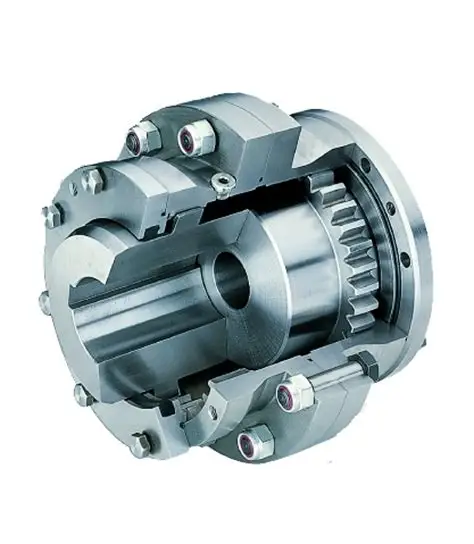GEAR COUPLING
Equipment couplings are torsionally rigid and are provided to two patterns â entirely adaptable and versatile/rigid. A totally versatile coupling comprises two hubs with an exterior gear and two outer sleeves with an inside equipment. It really is a common coupling for all sorts of apps and accommodates all possible misalignments (angular, offset and merged) as properly as huge axial times. Equipment, bearings, seals, and shafts are as a result not subjected to the added forces, sometimes of significant magnitude, which occur from unavoidable misalignment generally associated with rigid shaft couplings.
A adaptable/rigid coupling comprises 1 adaptable geared fifty percent and a single rigid  fifty percent. It does not accommodate parallel displacement of shafts but does accommodate angular misalignment. This kind of couplings are largely employed for “floating shaft” apps.
fifty percent. It does not accommodate parallel displacement of shafts but does accommodate angular misalignment. This kind of couplings are largely employed for “floating shaft” apps.
Measurements 010 â 070 all have topped enamel with a 20° stress make contact with (fig 1). This enables to accommodate up to 1,5° static angular misalignment for each equipment mesh. Even so, minimizing the operational misalignment will increase the lifestyle of the coupling as effectively as the existence of other machinery elements these kinds of as bearings etc.
Equipment COUPLING
gear coupling is a torsionally rigid grease crammed coupling consisting of two hubs with external multicrown – and two flanged sleeves with straight inner teeth. The flanged sleeves are bolted with each other with large toughness corrosion protected fitted bolts and nuts. The sleeve is at the opposite aspect of the flange executed with an endcap (inside for small and screwed for large dimensions couplings) in which the o-ring is located for sealing reasons. The gear coupling has been designed to transmit the torque amongst these two flanges by way of friction keeping away from fretting corrosion amongst these faces.
The tooth of hub and sleeve are repeatedly in contact with every other and have been developed with the required backlash to accommodate angular-, parallel- and axial misalignment inside of their misalignment capacity. The angular and parallel misalignment capability is identified by the gear tooth design and style and is for the regular gear max. one.5° levels (two x .75°) in overall. The axial misalignment capacity is minimal by the equipment enamel size in the sleeve and can be different (optionally).
See our website if you have any type of questions pertaining to CHINA GEAR COUPLING.